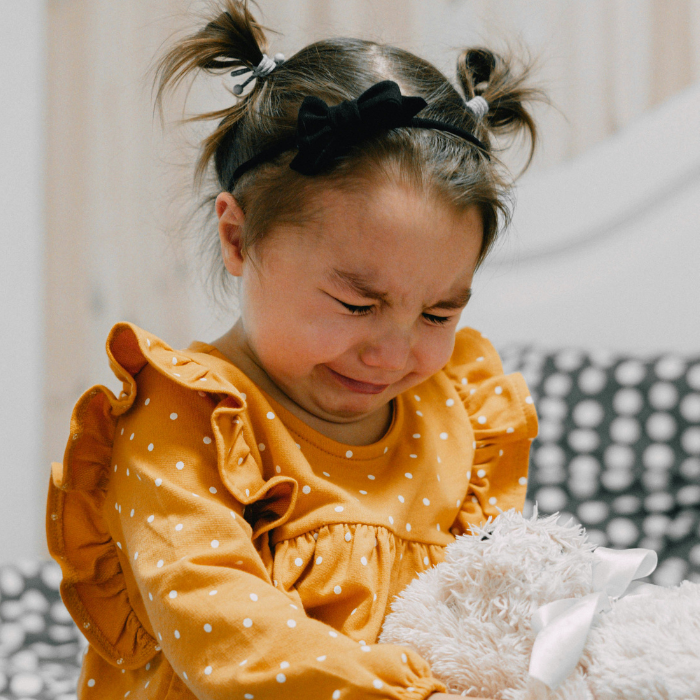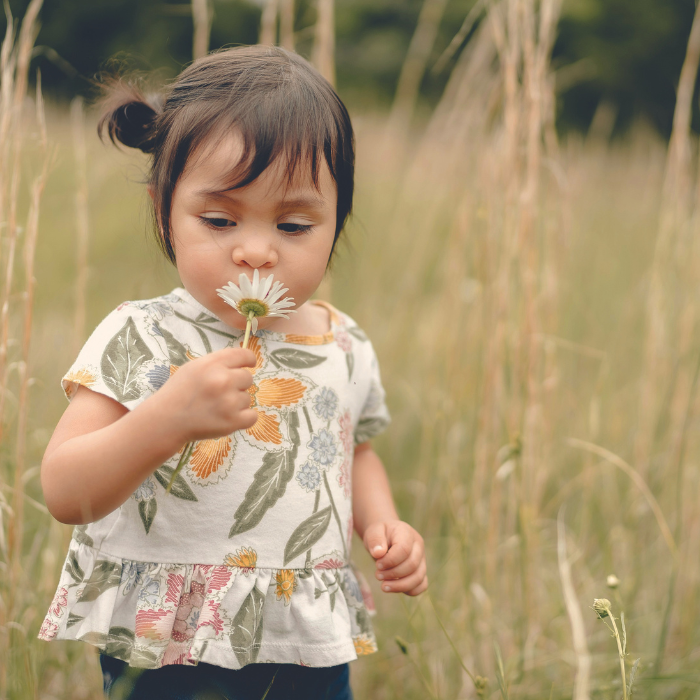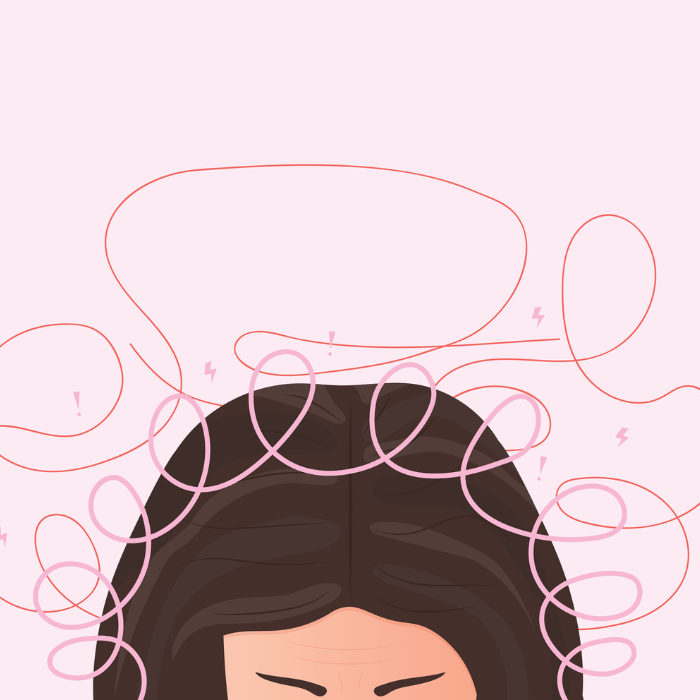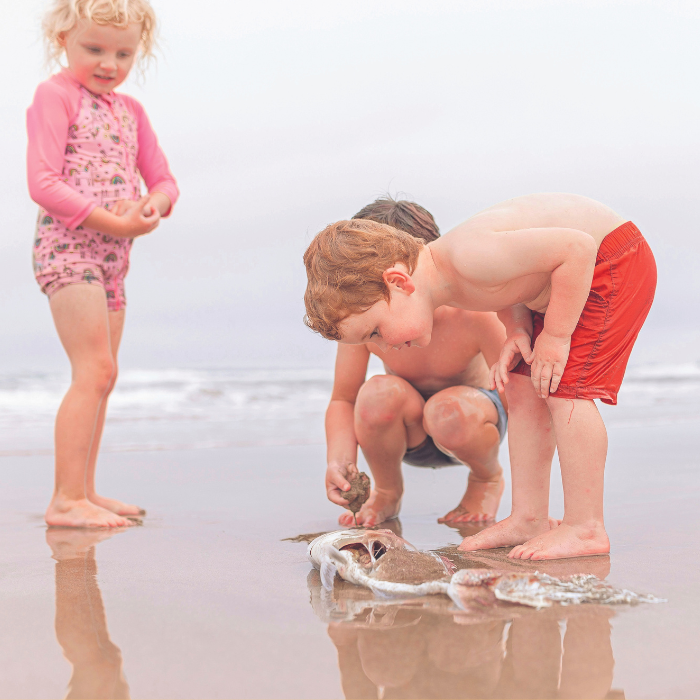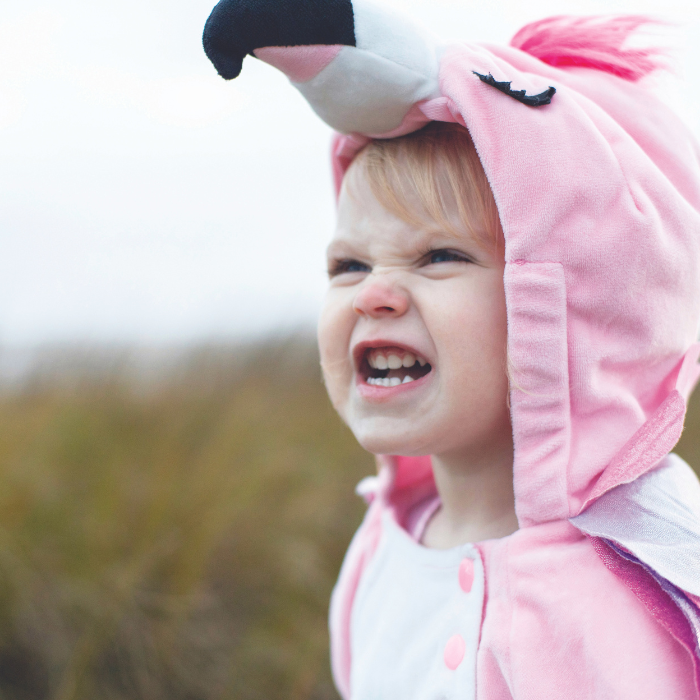
Katherine Granich explains the concept of co-regulation and how this can lead our children to become emotionally aware, self-regulated adults.
Here’s a scenario: Your child needs to go to the dental nurse, and they’re not happy about it. They’ve heard colourful tales of the “murder house” and they’re picturing teeth being yanked out with gigantic pliers and hatchet-faced dental nurses hovering over them, shining bright lights in their faces and scraping mercilessly at their teeth. Honestly, this imagery is enough to give me the heebie-jeebies, let alone a kid! So it’s no surprise your child is upset, worried, panicked, stressed, and even possibly expressing their emotions through behaviours – tantrums, refusals, crying, physically resisting, the works.
As a parent, what do you do? Do you tell them to stop it, don’t be silly, suck it up, grow up, stop acting like a baby, be quiet? Do you bribe them with a prize, something new, a stop at the park on the way home, an extra 10 minutes at bedtime? Do you yell at them? Do you tell them one of your own dental nurse horror stories from childhood, thinking perhaps they’ll realise how good they have it compared to you? Do you ignore them and pretend it’s not happening, hoping that if they see you’re not reacting, they’ll stop exhibiting they’re upset? Do you hand them over to the dental nurse and retreat to the car to wait – out of sight, out of mind?
All of these are possibilities you’ve probably considered, and some of them are probably things you’ve done (no judgement). We learn about regulating our emotions from our parents, and many of us have or had parents who were not as emotionally literate as we want to be, not because they didn’t love us, but because they didn’t understand the concept of co-regulation – that the feelings and behaviour of people close to us influence how we feel and respond to our own emotions. And this is especially important in the parent-child relationship, because our children learn how to regulate their own emotions from the example we show them.
As childhood therapist Chanelle Sowden explains, “The extent to which we can co-regulate as parents/adults is influenced by the extent to which we can self-regulate ourselves, which is influenced by the extent to which we were co-regulated by our parents/adults.”
So many modern parents are learning to self-regulate their emotions at the same time they’re learning to co-regulate with their children – talk about hard work! But it gets easier and more accessible the more we practise it. Even if our kids’ grandparents roll their eyes and call us “woke”, our children will reap the benefits as they grow to adulthood as emotionally intelligent humans who can handle “big feelings” with grace and self-understanding.
THE INFLUENCE OF OTHER PEOPLE’S FEELINGS
Co-regulation starts with awareness of our own moods, feelings, and emotions, and acknowledging that how we feel and act has an impact on others, and how they feel and act has an impact on us. Imagine you’re at the supermarket and the person in front of you at the till is arguing with the cashier about the total on their receipt. They might raise their voice, or say something harsh, or their body language might be aggressive and threatening. Even though you’re not the object of their ire, you can’t help but start to tense up, feel the prickle of stress, perhaps clench your teeth as you nervously scroll your phone and fastidiously avoid eye contact. Once they leave, you might feel your body start to relax, your shoulders fall, your breathing become slower.
You have the emotional intelligence to identify that the way someone else was behaving, and the manifestation of their feelings, made you feel. You also have the agency, as an adult, to choose to leave a situation that doesn’t make you feel good – you can say, “That’s it, I’m done here!” and take yourself away. And afterward, you can go home, make yourself a cup of tea, sit in your peaceful garden, and call a friend to tell them about the person in front of you arguing about being overcharged two cents. You have strategies and techniques you can employ to calm yourself down and regulate your emotions.
Children, particularly young children, often don’t know how to deal with stressful situations. They can’t just leave, and many times they’ve been taught that if an adult is talking to them or an adult is in charge, it’s their job to listen and comply without question. They may not understand what is happening, or be able to identify why they themselves are upset. They just know they have big feelings, and they are still learning how to deal with those big feelings in an effective way. And for children, it’s very hard to differentiate between the big feelings of anger, frustration, sadness, annoyance, grief, unhappiness, hurt, loneliness – all they know is that they feel badly, and they feel it in a big way.
THE POWER OF CO-REGULATION
In the dental nurse horror story earlier, there’s another option – holding space for our children’s emotions and showing them, through our own calm, that it’s okay for them to feel how they feel and, eventually, how to calm themselves down. I admit that the dental nurse experience is a bit of an extreme example, and not the time to begin consciously co-regulating with our children. But through countless everyday interactions which reinforce co-regulation, someday, that dental nurse scenario might not be as fraught for your child (or for you) – and you will both have better tools to handle it.
It’s our job as parents to support our children through these big feelings, and this begins with a strong connection. Your child trusts you, and because of that trust, you’re in a privileged position to be able to teach them how to respond in times of stress. This is called “emotion coaching”, and in its simplified form, it’s being aware of your children’s feelings and viewing the expression of these feelings as an opportunity for connection. Saying to your child, “It’s okay to feel sad/mad/worried/etc” normalises feeling this way – as these feelings are part of the normal human experience, and we all need to learn to deal with them. Co-regulation goes a bit further, showing your child how they can respond to and manage these emotions.
Co-regulation is a necessary precursor to self-regulation, and starts in infancy when you respond to your baby’s needs. Typically, co-regulation occurs throughout the first seven or so years of your child’s life, but children older than seven still need support! Self-regulation grows and develops through co-regulation with adults like parents, teachers, coaches, and older peers like siblings. As your child grows, they will have more autonomy and a greater ability to self-regulate independently. And adults who can self-regulate are better able to handle life’s stresses, disappointments, difficulties, anxieties, and frustrations, which in turn is a predictor of a successful, emotionally intelligent life.
SOME WAYS YOU CAN PRACTISE CO-REGULATION WITH YOUR CHILD:
Regularly talk about emotions and how you and your child feel, in an age-appropriate way. “Did you notice the grumpy person in the supermarket queue? When they were yelling, I felt nervous! How did you feel?”
- Have check-ins with your child about their feelings, asking them what they are feeling in their body and mind. Approach these conversations with openness and impartiality – you are asking them to notice, not judging or sharing your opinion on these feelings. “You seemed sad when your friend didn’t want to play today. How were you feeling in your body? Hmm, your tummy was feeling a bit upset. What do you think you could do to help feel better?”
- Show your child that you also experience emotions, and model how you manage them. “I was sad when the rainstorm flooded my flower garden. I was annoyed when I had to clean up all the mud! I had a little cry, and then I had a hot shower to wash the mud off, and then I felt better. I think I will be happy when we go to the garden centre and pick out some more flowers.”
- Recognise and acknowledge when your child is experiencing a big emotion, and ask them to tell you how they are feeling. Talk about it non-judgementally, and tell them it’s okay to feel this way, and reassure them you are here with them while they are feeling.
- Get down on your child’s level to make eye contact, and reassure them that they are safe with you. “It is okay if you need to cry. It is okay to be scared. I will be with you and I will help you. Would you like me to hold your hand or would you like a cuddle?”
- Take deep breaths together. Ask your child to mimic your breathing, with their hand on your chest, and deliberately slow your breaths until theirs match.
- The Five Senses technique: Ask your child to name five things they can see, four things they can hear, three things they can touch, two things they can smell, and one thing they can taste. This helps ground them and bring them back into their body.
- Offer a physical break from the situation, such as taking time out to get a drink of water, a walk around the outside of the building, singing a song together, or a cuddle with you.
- Make the situation as easy as possible. If your child is facing what you know will be a trying experience, and there are accommodations that will make things easier and less stressful, such as having the first appointment of the day (not the appointment that falls at naptime!), seeing the same practitioner as last time, sitting on the floor or on your lap instead of alone on a chair, wearing a preferred outfit, holding a special toy, etc, do any and all of those things – and tell your child ahead of time so they know those things are okay.
- Be your child’s advocate. If they are faced with another adult in a position of authority who is trying to control or shame your child’s feelings, step in and gently explain that your child’s feelings are valid, and that their response needs to reflect this – you are telling them that they need to self-regulate in order for them to co-regulate with your child. This can be a difficult thing to action, particularly in our overstretched health system, but it is sometimes necessary.
PUSHING MY BUTTONS…
How often have you felt like your child was annoying you beyond the point of reason? Or have you witnessed a coach or teacher snapping at a child out of their own feelings of frustration? Adults who respond to children’s behaviours with their own emotional outbursts or yelling are not self-regulating, and when they do this, children will not be able to soothe themselves. When a child is pushing your buttons, it is your job as the adult to self-regulate. Give yourself a time out, go for a run, take yourself into the other room and breathe deeply – whatever it takes to calm down in the moment. Then when you’re calm, have some self-talk about what happened, and recognise your own emotional response and how you might handle it more calmly and emotionally maturely next time.



